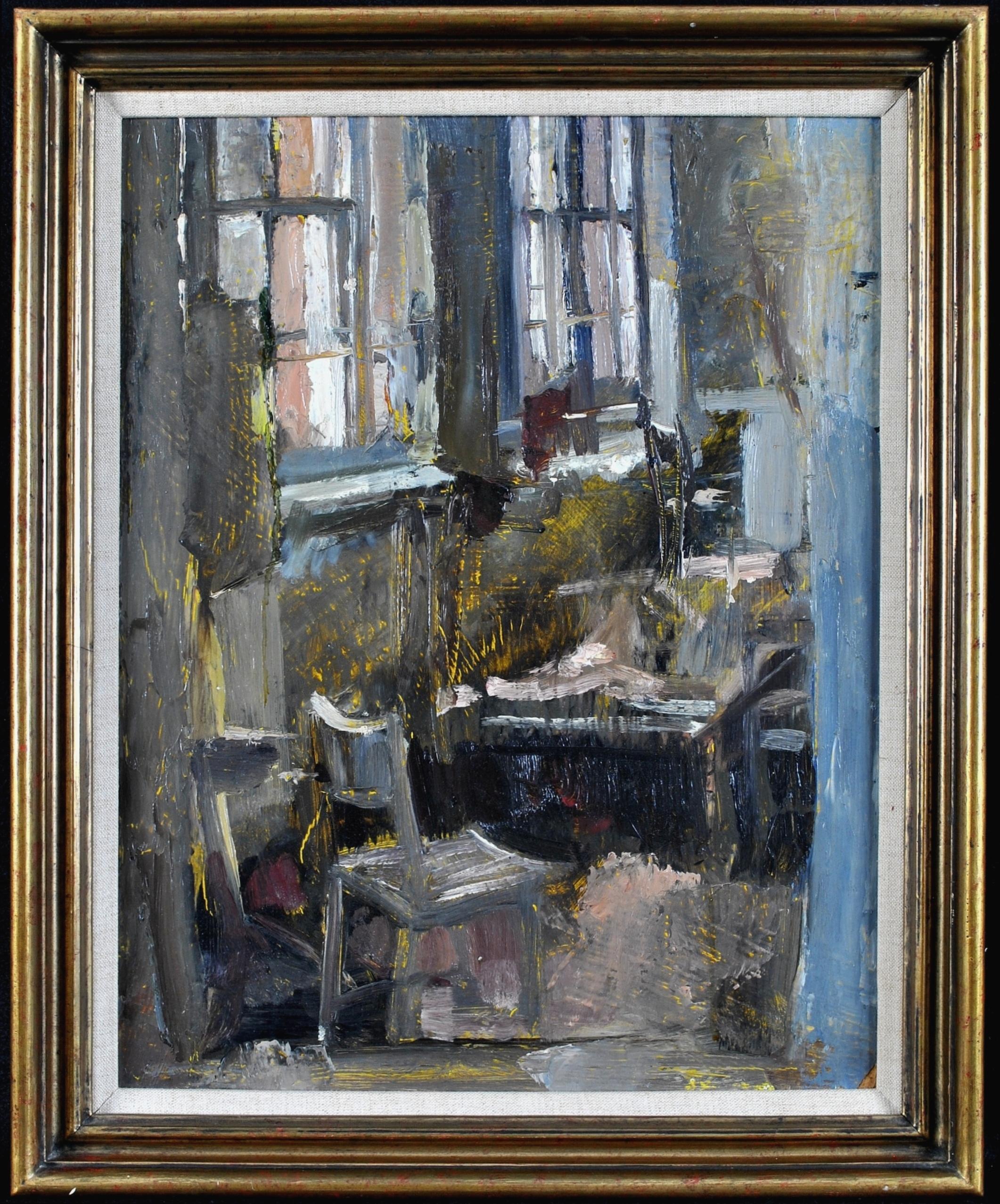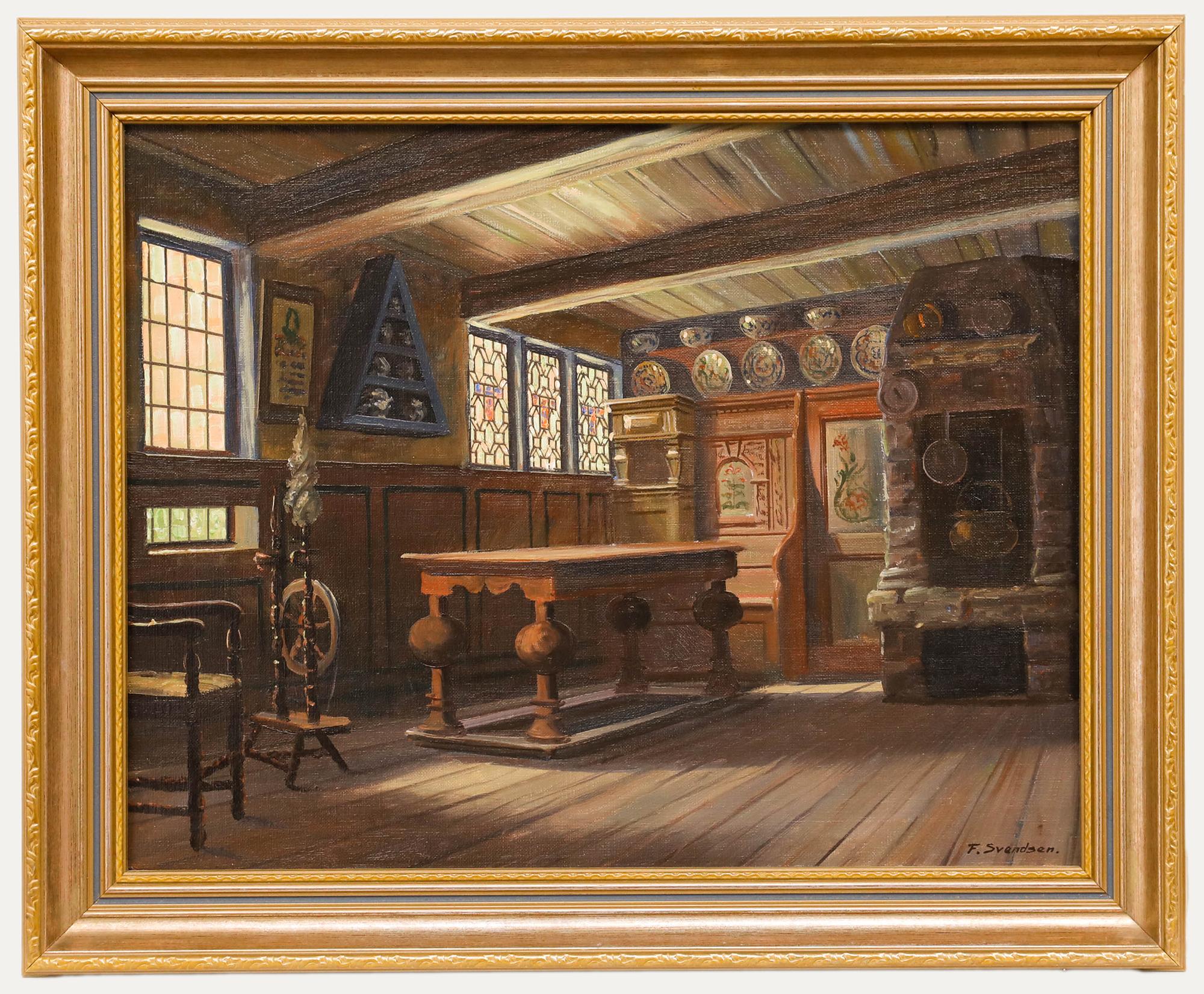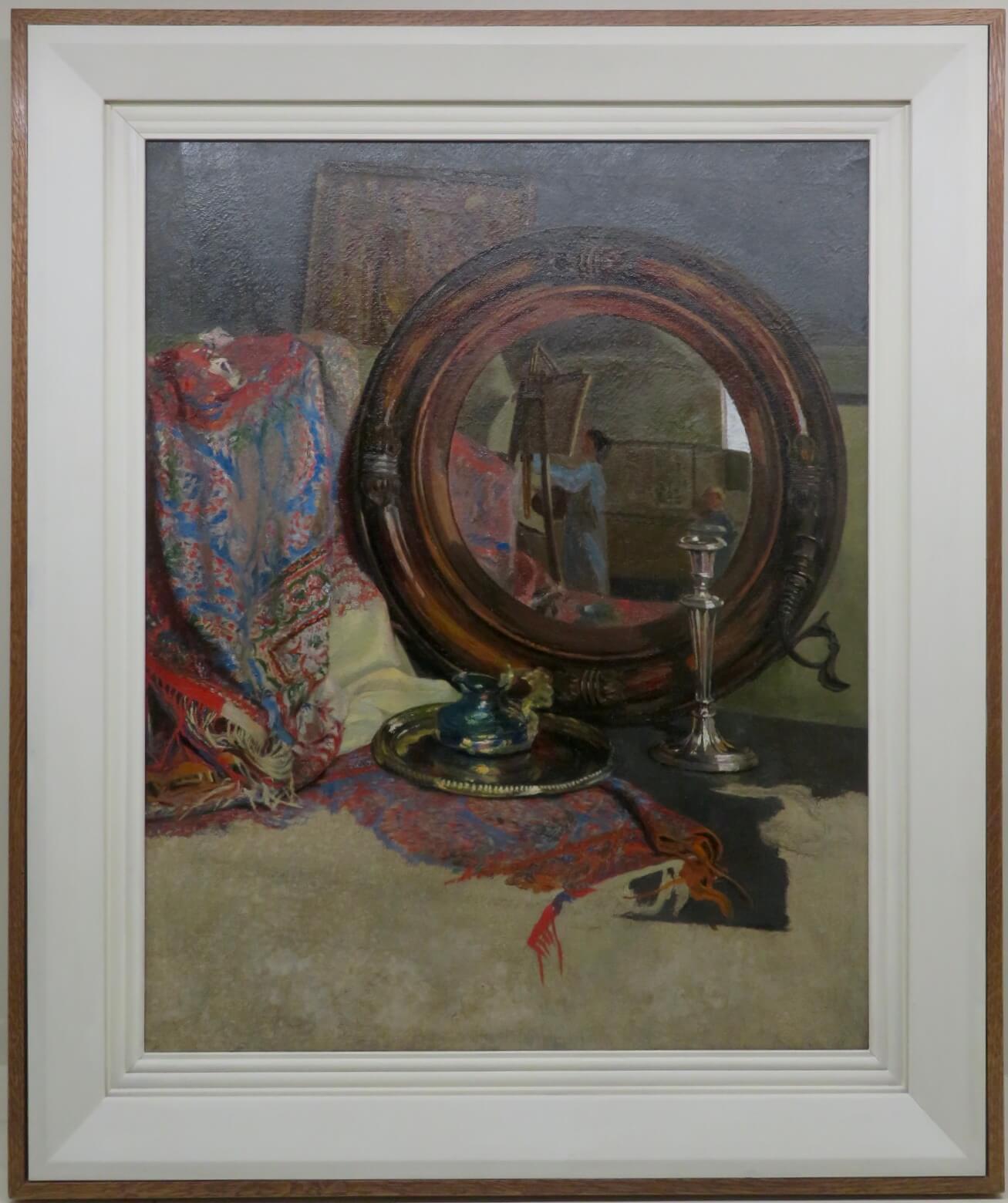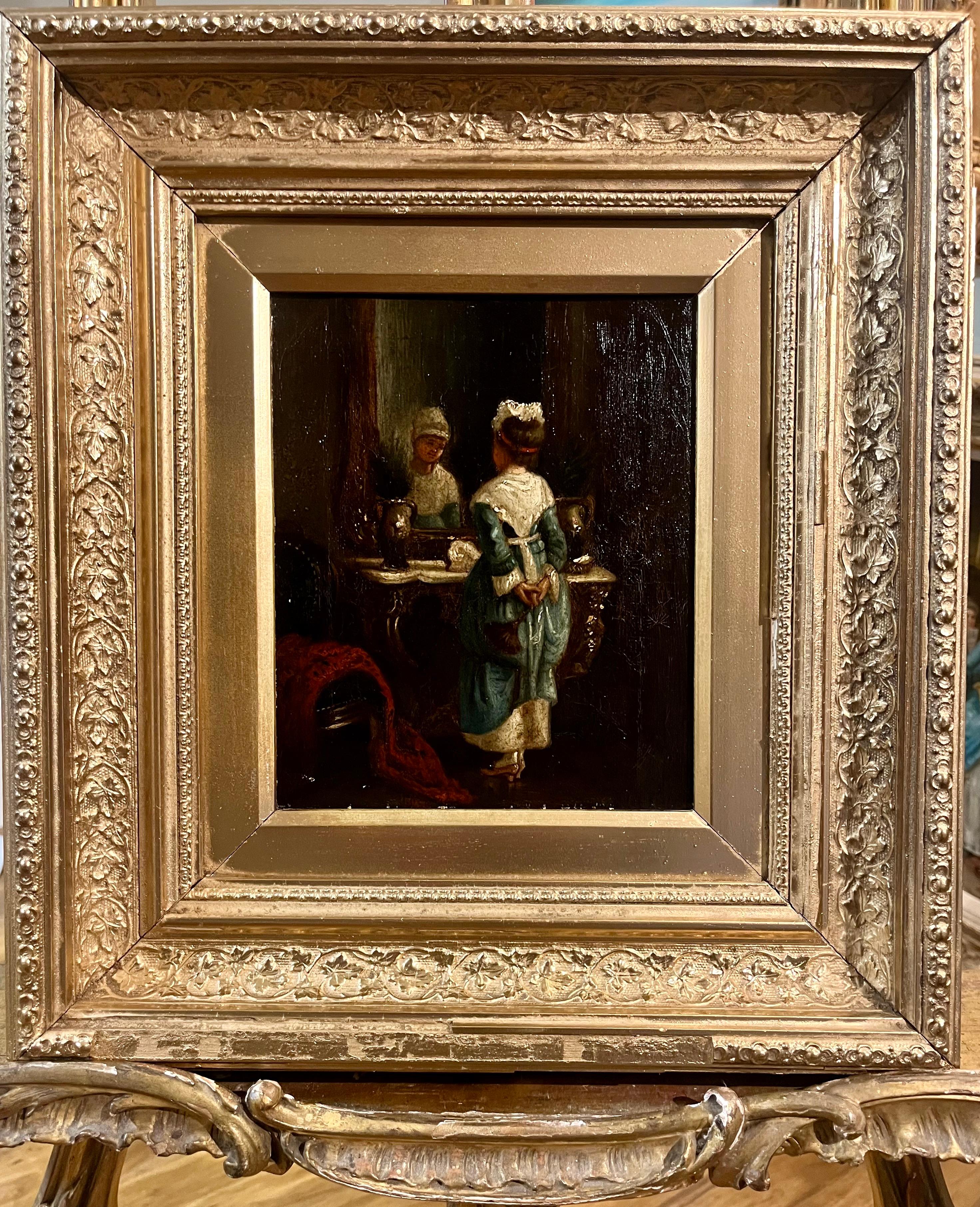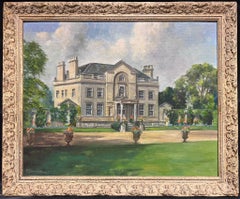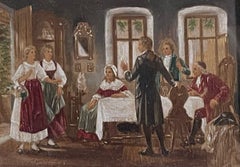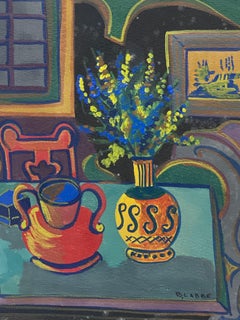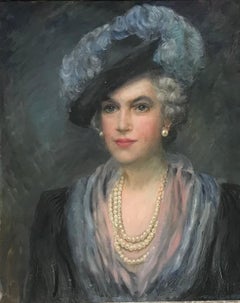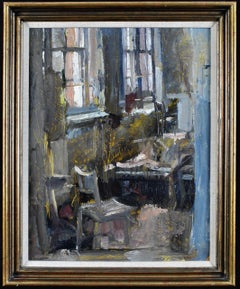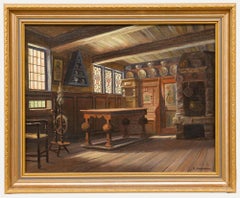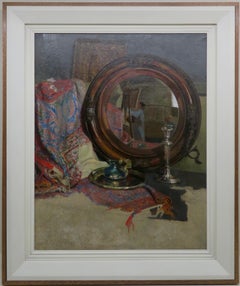Items Similar to Fine 1950's English Oil Grand Interior Room Scene Ancestral Portraits signed
Want more images or videos?
Request additional images or videos from the seller
1 of 11
English mid 20thFine 1950's English Oil Grand Interior Room Scene Ancestral Portraits signed
$1,632.95
£1,200
€1,409.80
CA$2,243.40
A$2,504.55
CHF 1,312.34
MX$30,658.10
NOK 16,666.79
SEK 15,714.66
DKK 10,521.49
Shipping
Retrieving quote...The 1stDibs Promise:
Authenticity Guarantee,
Money-Back Guarantee,
24-Hour Cancellation
About the Item
The Guildhall, Worcester
English School, mid 20th century
indistinctly signed verso
oil on canvas
canvas: 20 x 24 inches
provenance: private collection, UK
condition: very good and sound condition
The Worcester Guildhall was originally built as a meeting place for Worcester merchants around 1227. As with many other guildhalls, it became the centre for civic administration, a role it maintained after the merchant guild had disappeared.
The present Worcester Guildhall is a superb Queen Anne building, begun in 1722 by Thomas White, a pupil of Sir Christopher Wren. White was badly paid for his efforts, and he died in poverty in 1738, bestowing the money he was owed on the Worcester Royal Infirmary. The city finally paid its debt in 1753.
The exterior of the Guildhall is brick, dressed with stone. White himself is said to have carved the figure of Queen Anne over the entry, as well as those of Charles I and II, a reminder of the city's long history of royal support. The interior is superb, boasting exceptional period decoration. The Tourist Information Centre is now located in the Guildhall.
HISTORY
In 1227 Henry III granted the citizens of Worcester a royal charter granting them the right to establish a guild of merchants. The guild was responsible for controlling trade in the city, but their meeting place gradually became the main centre of administration for city government and acted as a courthouse. So, in effect, the Guildhall was the town hall, and though the city guilds have long since vanished, the Guildhall name lives on.
The medieval guild merchants would not recognise the building that faces onto High Street now. Their guildhall was a large timber-framed building, occupying the same site, with a piazza for shops fronting the street, courts of justice at each end, and a prison to the north of the building.
Part of the prison was a cell called 'the peephole', which gained a notorious reputation. There was a gaoler's house, and attached to it an alehouse from which the gaoler sold ale at extremely high prices to any prisoner who could afford the cost.
In 1717 the city administration decided on a new Guildhall, and they knew just who to call; upon to build it. Thomas White was not an architect in the way we think of it today, but a stonemason. In 1705 he had carved a statue of Queen Anne to stand in front of the medieval Guildhall and was made a Freeman of the City. The total cost of the fashionable new red-brick building was £3727. The Corporation only put forward £800, and the rest had to be raised by public subscription.
The centre section of the new Guildhall was finished by 1724 and has remained almost unchanged since then. The central facade is a wonderful example of early Georgian style, with three bays flanked by Corinthian pillars.
Over the entrance is a huge carving incorporating the Hanoverian royal arms. White's earlier statue of Queen Anne was placed in a niche over the door, and on either side were statues of Charles I, depicted holding a church, and Charles II, with an orb and royal sceptre. On the rooftop are figures of Labour, Peace, Justice, Plenty, and Chastisement.
North and south wings were added within a few years of the central block. The south wing was used as a judge's lodging when the assizes were taking place, but throughout the rest of the year it housed a coffee shop.
The most striking external feature of the Guildhall is a set of iron gates and railings facing onto High Street. These were erected in 1750, and are eye-catching due to the gilded design of the entrance gateway.
The 'new' Guildhall had 3 functions; social, judicial, and civic. On the lower Hall were 2 courtrooms, and above these chambers for playing cards and taking tea. On the first floor is the Council Chamber, later called the Assembly Room. In 1788 George III and Queen Charlotte visited the Guildhall. King George drank a toast to the prosperity of the city, and called the Assembly Room a 'handsome gallery'. A portrait of the king was presented to the City after his visit and still hangs in the Assembly Room.
The exquisite chamber we see today is not the one George III saw, for it was remodelled in 1791 by George Byfield, with beautifully decorated apses at each end. Then from 1877 the architect Sir Gilbert Scott and the City Architect Henry Rowe remodelled the building and redesigned the Assembly Rooms with an extraordinary Italianate painted ceiling. The result is an opulent space, with an ornate ceiling that simply defies description.
The courtrooms on the ground floor are no longer used for judicial proceedings but are used as a mayor's parlour and a committee room.
Parts of the building are used by the civic administration, but visitors can normally visit the ground floor hall and one courtroom, then climb to the second floor to see the remarkable Assembly Room.
- Creator:English mid 20th (English)
- Dimensions:Height: 20 in (50.8 cm)Width: 24 in (60.96 cm)
- Medium:
- Movement & Style:
- Period:
- Condition:
- Gallery Location:Cirencester, GB
- Reference Number:1stDibs: LU509312760962
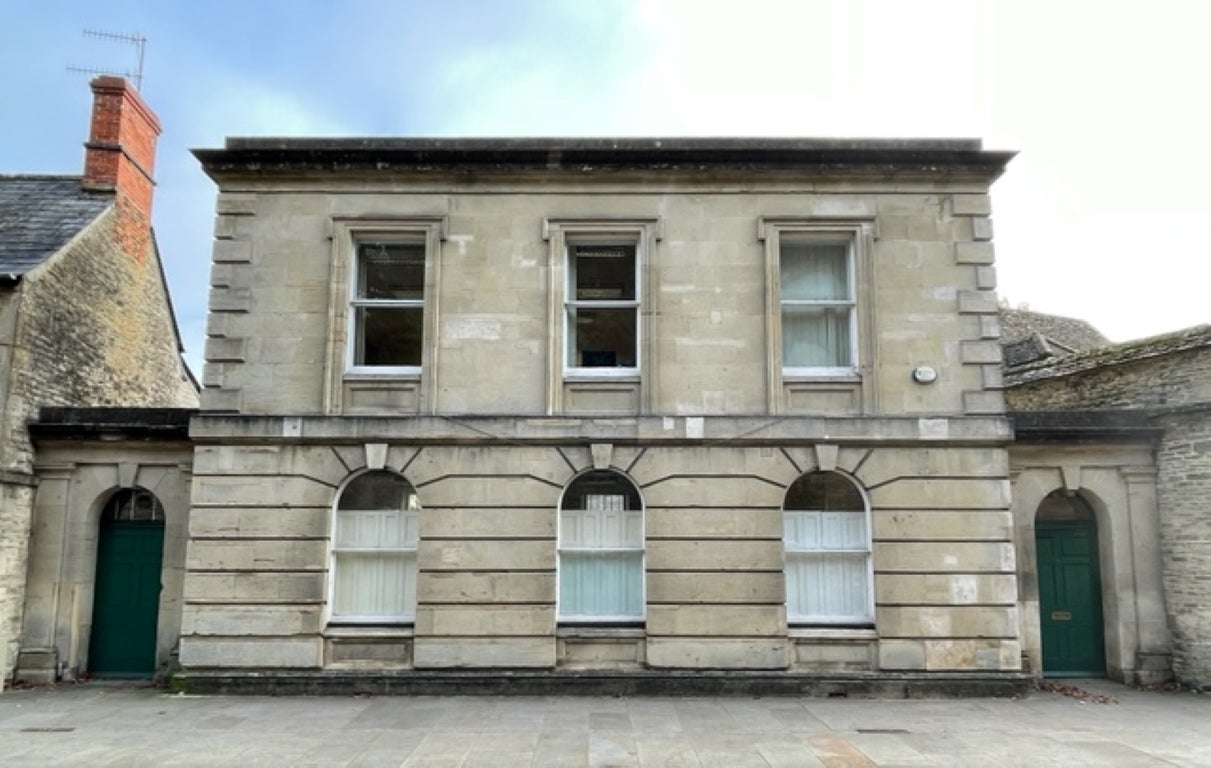
About the Seller
5.0
Platinum Seller
Premium sellers with a 4.7+ rating and 24-hour response times
Established in 1989
1stDibs seller since 2016
4,643 sales on 1stDibs
Typical response time: 1 hour
- ShippingRetrieving quote...Shipping from: Cirencester, United Kingdom
- Return Policy
Authenticity Guarantee
In the unlikely event there’s an issue with an item’s authenticity, contact us within 1 year for a full refund. DetailsMoney-Back Guarantee
If your item is not as described, is damaged in transit, or does not arrive, contact us within 7 days for a full refund. Details24-Hour Cancellation
You have a 24-hour grace period in which to reconsider your purchase, with no questions asked.Vetted Professional Sellers
Our world-class sellers must adhere to strict standards for service and quality, maintaining the integrity of our listings.Price-Match Guarantee
If you find that a seller listed the same item for a lower price elsewhere, we’ll match it.Trusted Global Delivery
Our best-in-class carrier network provides specialized shipping options worldwide, including custom delivery.More From This Seller
View AllCountry House Portrait Faringdon House Oxfordshire Grade 1 Listed Oil Painting
Located in Cirencester, Gloucestershire
Faringdon House, Oxfordshire
English School, mid 20th century
inscribed to label verso
oil on board, framed
framed: 19 x 23 inches
provenance: private collection, England
condition:...
Category
Mid-20th Century Modern Landscape Paintings
Materials
Oil
Victorian Interior with Several Figures Antique English Oil Painting
By Victorian School
Located in Cirencester, Gloucestershire
The Victorian Interior
English School, 19th century
oil on board, framed behind glass hence photo reflection glare
framed: 7 x 8.5 inches
board: 4 x 5 inches
inscribed verso
provenan...
Category
19th Century Victorian Figurative Paintings
Materials
Oil
1950's Modernist Signed Painting - Interior Abstract Scene
By Bernard Labbe
Located in Cirencester, Gloucestershire
Interior Abstract
by Bernard Labbe (French mid 20th century), signed, stamped verso
original gouache painting on paper
overall size: 16 x 12 inches
condition: very good and ready to...
Category
Mid-20th Century Modern Interior Paintings
Materials
Watercolor, Gouache
Fine British Mid 20th Century Oil Painting Portrait of a Society Lady
Located in Cirencester, Gloucestershire
Artist/ School: British School, indistinctly signed lower right, circa 1950's
Title: Portrait of an Aristocratic Lady. The previous owner believed the sitter to be a member of the Q...
Category
Mid-20th Century Victorian Portrait Paintings
Materials
Oil
Fine 18th Century Italian Oil Painting Elegant Figures Rococo Interior Setting
Located in Cirencester, Gloucestershire
Elegant Figures in Interior *see notes below
Italian School, mid 18th century
most likely of Venetian origin
oil on canvas, unframed
canvas: 10.75 x 11.75 inches
provenance: private ...
Category
Mid-18th Century Rococo Figurative Paintings
Materials
Oil, Canvas
Large Victorian British Signed Oil Rural Life House by Stream Many Figures
Located in Cirencester, Gloucestershire
The Old Victorian House
by Vivian Crome (British 1842-1926)
signed & dated 1885
oil on canvas, framed
Framed: 35.5 x 30.25 inches
Canvas: 32 x 26 inches
Provenance: private collectio...
Category
19th Century Victorian Landscape Paintings
Materials
Oil
You May Also Like
The Studio - Fine Mid 20th Century Interior Oil on Board Painting Agnew's London
By Lord Paul Ayshford Methuen
Located in Sevenoaks, GB
A beautiful c.1950 oil on board by Lord Paul Ayshford Methuen RA depicting the artist's studio with light pouring in through two large sash windows.
The ...
Category
Mid-20th Century Interior Paintings
Materials
Oil, Board
$2,939 Sale Price
20% Off
Free Shipping
Scottish Interior - Scottish 19th century Victorian art interior oil painting
By George Hay
Located in London, GB
A fine Scottish Victorian interior scene by George Hay RSA. A very vibrant stunning Scottish historical interior painting which dates to about 1870. It depicts two women curtsying...
Category
19th Century Victorian Figurative Paintings
Materials
Oil
Frederik Svendsen (1885-1975) - Mid 20th Century Oil, Panelled Interior
Located in Corsham, GB
This evocative interior scene captures the warmth and character of a rustic colonial-era kitchen, with sunlight streaming through leaded windows to illuminate an array of period furn...
Category
20th Century Interior Paintings
Materials
Oil
EARLY / MID 20TH CENTURY English School Oil Painting INTERIOR SELF PORTRAIT
Located in Cirencester, GB
ARTIST: Unsigned (early / mid 20th Century) English School
TITLE: "Self Portrait In A Round Mirror"
SIGNED: appears unsigned
MEDIUM: oil on canvas
SIZE: 73cm x 62cm inc frame
CONDIT...
Category
Early 20th Century English School Interior Paintings
Materials
Oil
FINE ORIGINAL ANTIQUE 19th CENTURY INTERIOR SCN BRITISH OLD MASTER OIL PAINTING
Located in Ferndown, GB
OIL PAINTING Antique 19th Century Fine Quality Piece Gold Gilt frame ( damaged frame )
OLD MASTER OIL PAINTING BRITISH SCHOOL 19th Century in a Gold Frame
Description.
19th centu...
Category
Mid-19th Century Realist Landscape Paintings
Materials
Oil
Oil Painting by William Shayer Snr "An Inn Interior"
By WILLIAM SHAYER SENIOR (1787-1879)
Located in Mere, GB
Oil Painting by William Shayer Snr "An Inn Interior" 1787- 1879 Leading regency rural landscape painter from Southampton. He exhibited at the Royal Academy, B.I and 338 times at the ...
Category
19th Century Interior Paintings
Materials
Oil
More Ways To Browse
Modern Interior Doors
Church Interior
Mid Century Street Scene Painting
Mid Century City Scene Oil Painting
1950 Interior Door
Mid Century Modern Entry Door
Church Interior Painting
Georgian Portrait Oil Paintings
Retro 1950s Front Door
1950s Red Dress
Mid Century White Statues
Courtroom Art
Dior 1950s Dress
Queen Charlotte
Orb Stand
King Charles Ii
Stone Niche
Georgian Bay Art
